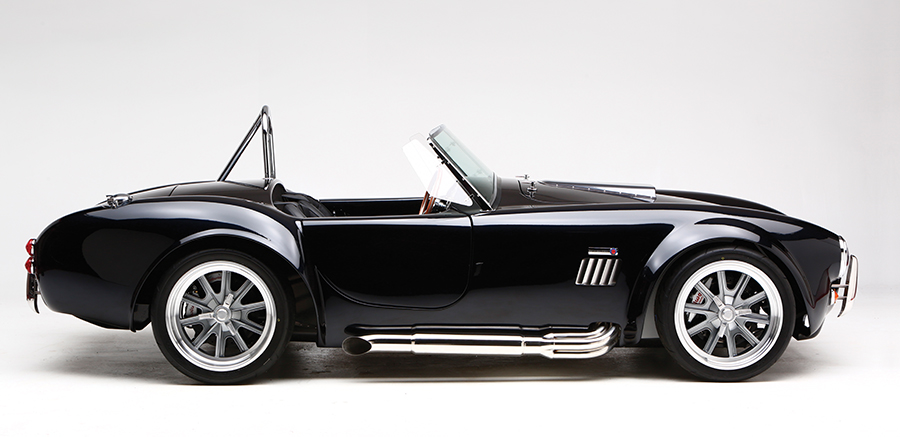◄ Back to Driving Force, Spring 2016
New Federal Law Offers More Choices on Replica Vehicles

| Low Volume Motor Vehicle Manufacturers Act Q&A What is a “low volume” manufacturer? A company whose annual worldwide production is not more than 5,000 motor vehicles each year. The company may sell up to 325 “replica” cars a year in the United States. How does the law define a replica vehicle? A replica vehicle resembles the body of another motor vehicle produced at least 25 years ago. Examples: ’30s Roadsters, ’40s Willys, ’60s Cobras and Mustangs and ’80s DeLoreans. How will this law impact kit car buyers and builders? Hobbyists will still have the freedom to assemble their own vehicle from a kit if they prefer, including modern-era and non-replica cars. The law simply provides another option for customers who may not have the time or skills to complete a kit car. When will replica cars be available? The federal government has until December 2016 to draft regulations implementing the law. Sales should begin in early 2017. Will I be able to title/register the car? SAN has worked with many states to establish specific categories for titling, registering and regulating replicas and specially constructed vehicles, which will also apply to turn-key replicas. The laws in many states allow these vehicles to be registered and titled by the model year of the production vehicle they replicate. For more information on the laws in your state, visit the “Titling & Registration” page on www.semasan.com. |
|
The year 2015 will be remembered for many things. For fans of classic cars, it represents the beginning of a new era. Thanks to a years-long effort by the SEMA Action Network (SAN), as well as the industry that supports us, the U.S. Congress passed a bill that will soon enable consumers to purchase turn-key replicas of classically styled vehicles. Signed by the president in December 2015, the new law (called the Low Volume Motor Vehicle Manufacturers Act) means enthusiasts now have the choice of purchasing a completed replica or building a vehicle from a kit.
The practice of recreating four-wheeled legends goes back generations. It first emerged in the ’50s when the law of supply and demand began to have a dramatic impact. There were more enthusiasts wanting to buy cars from previous decades than existed in stock, making prices unaffordable for many. A solution, aided greatly by a new material called “fiberglass,” allowed new look-alike bodies to be made rather inexpensively and placed on a newer frame. Kit cars allowed construction to occur in a hobbyist’s garage. Popular kits have been crafted to evoke beloved antiques and sports cars, including early Auburns, Bugattis, Porsches and the offerings of Carroll Shelby, to name a few. Notably, these vehicles are commonly employed by film and television studios, when several “clones” are necessary to complete a production. For example, who can forget the 250GT SWB California Spyder starring in Ferris Bueller’s Day Off? It was actually a high-quality replica inspired by the ’61 Ferrari Modena Spider.
As a result of the new law, beginning in 2017, a small automaker will be able to sell up to 325 turn-key replicas that resemble the body of a motor vehicle produced at least 25 years ago. From the ’60s until now, the United States had just one system for regulating automobiles. It was designed for companies that mass-produced millions of vehicles and not “low-volume” automakers. The law made it nearly impossible for small companies to sell turn-key cars since the federal government regulated these vehicles as if they were current model year vehicles, not vintage cars.
Replica cars have been marketed for decades as kits where a manufacturer sells car parts, frequently assembled, and the buyer installs the drivetrain (engine, transmission, etc.). Titling and registration for these finished cars are handled at the state level. In fact, thanks to another SAN-drafted law, many states already have registration and titling categories that allow replicas to be treated as the model year that they most closely resemble.
While this system has worked in many cases, it excluded those who didn’t have the time or technical skills to complete a kit car. The new SAN-supported law protects and expands the kit-car market. “There is no change for hobbyists who want to assemble their own specially constructed vehicle from any era with the engine package of their choice,” said SEMA Vice President of Government Affairs Steve McDonald. “However, early next year, enthusiasts will have the option of buying a turn-key replica from the manufacturer. We believe that this law will have the added benefit of spurring automakers to market an even wider variety of unique automotive offerings.”
Turn-key replicas will be subject to federal equipment standards (lighting, tires, windshields, brake hoses, etc.) but exempt from vehicle standards (roof crush, side impact, etc.). Nevertheless, the turn-key vehicles must meet current Clean Air Act emissions standards. This will be achieved by allowing the manufacturer to install a certified engine package from another current model year vehicle or a crate engine that has been certified by the California Air Resources Board (CARB). The vehicles will then be permanently exempt from emissions testing.
Now that the bill has been enacted, the SAN is working with National Highway Traffic Safety Administration (NHTSA) and the U.S. Environmental Protection Agency (EPA) to implement the regulations that accompany the law. The agencies have until December 2016 to issue the regulations, allowing consumers to begin purchasing these vehicles in 2017. With less than a year until turn-key replicas are available in the marketplace, the countdown to own these fully functional tributes has begun. Most importantly, this landmark new law symbolizes the unprecedented result that can be achieved with purposeful strategy, an organized plan of attack and galvanized forces—all executed with precision tact and timing.
